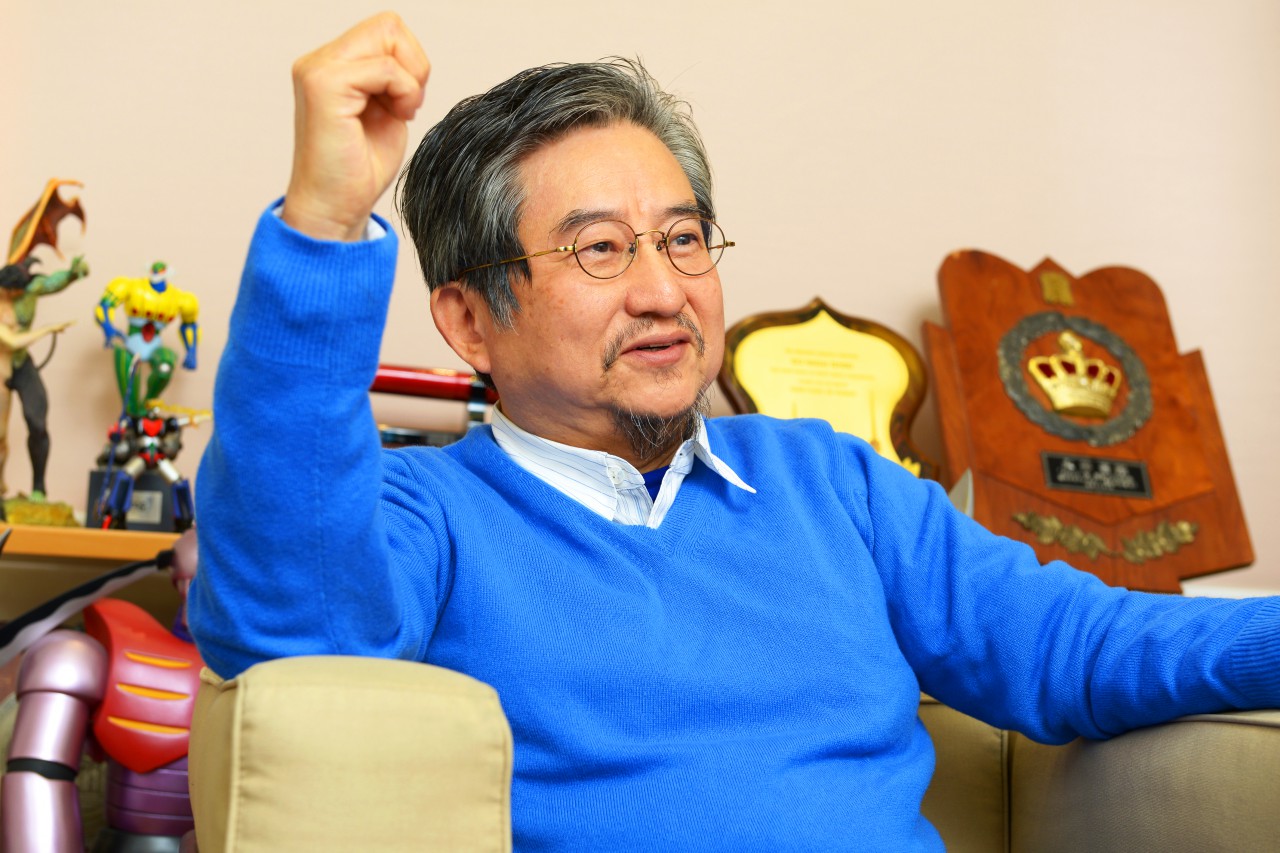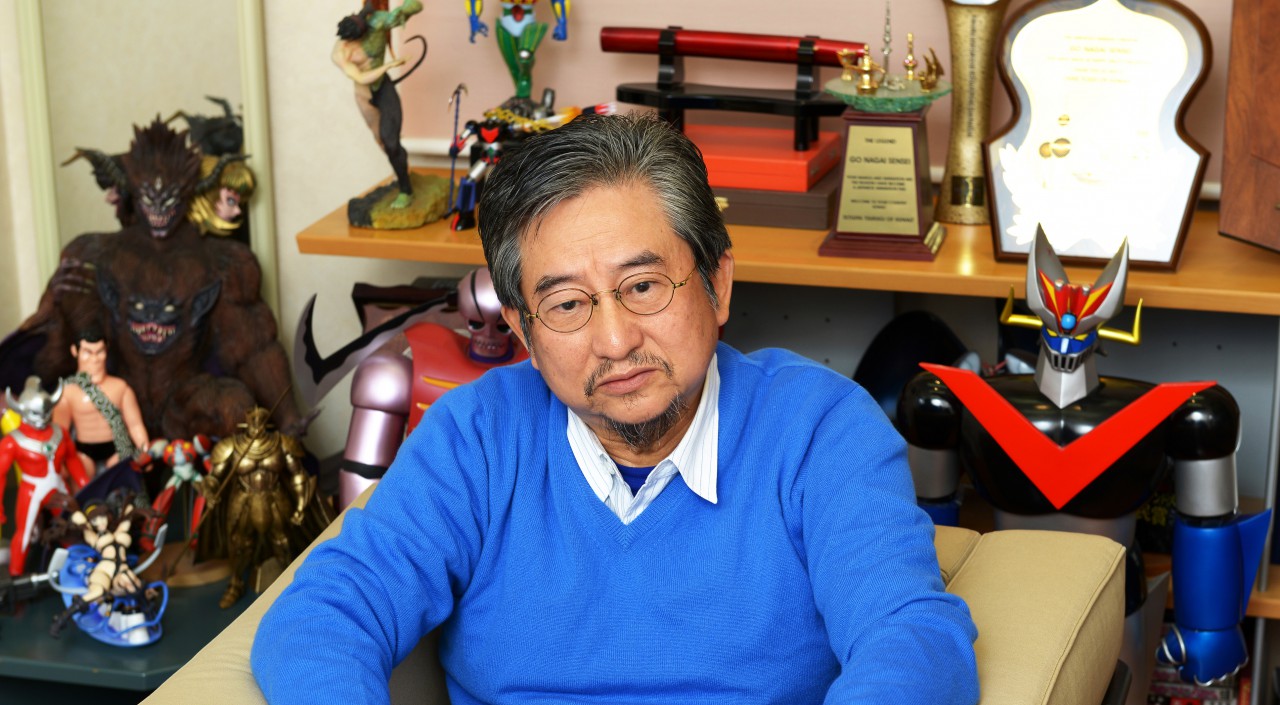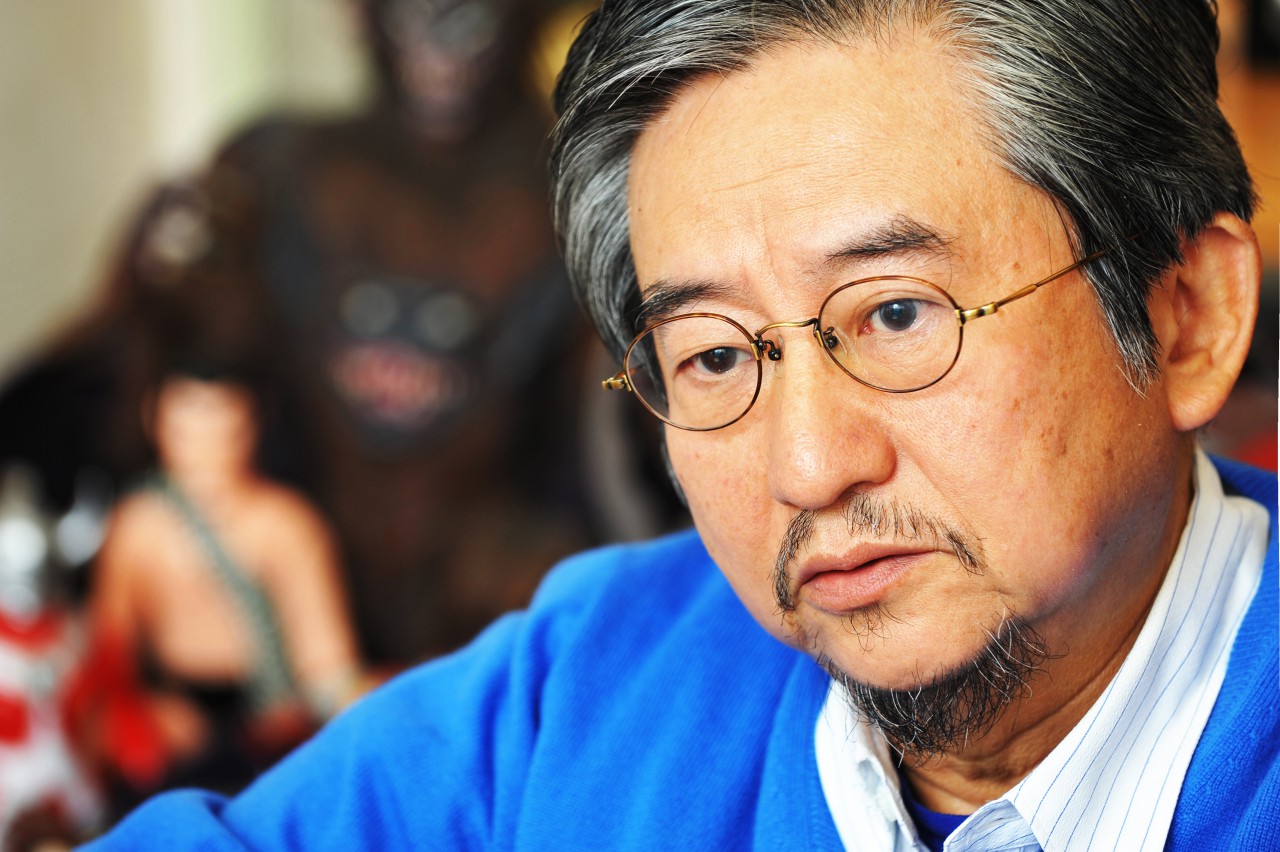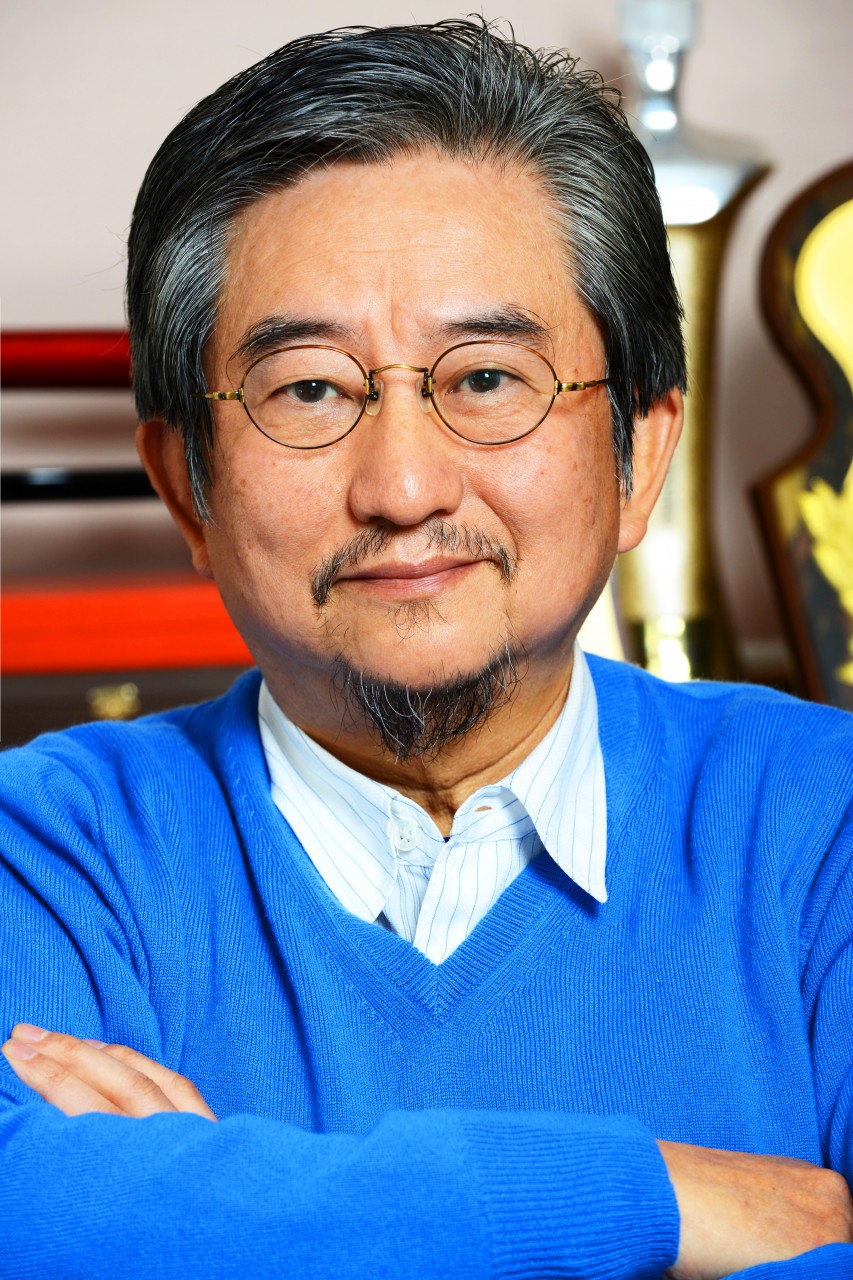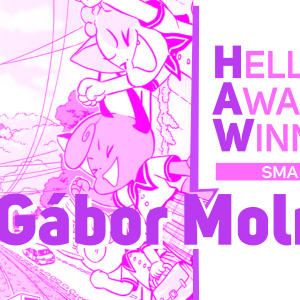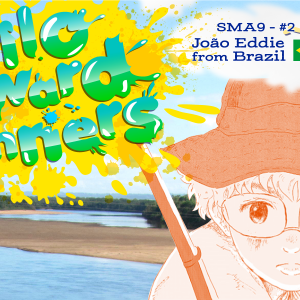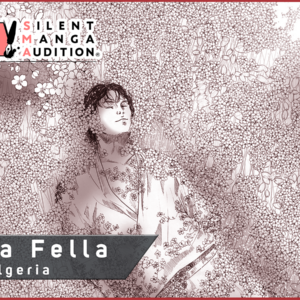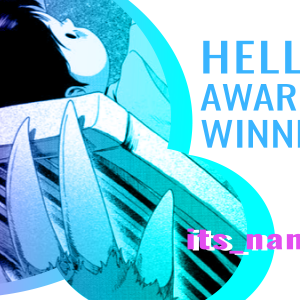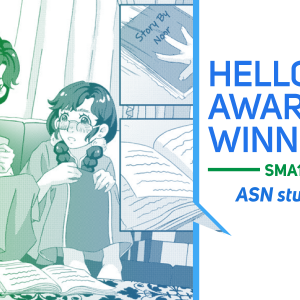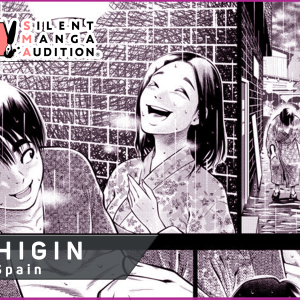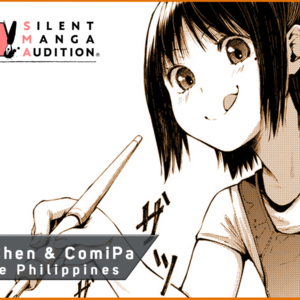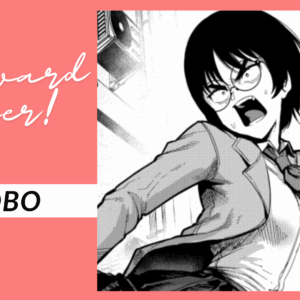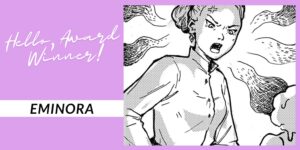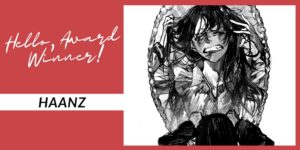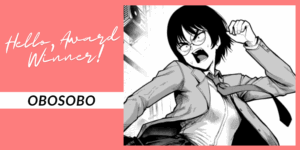Go Nagai sensei Interview – “Manga is the artist’s own ‘journey of the mind’.”
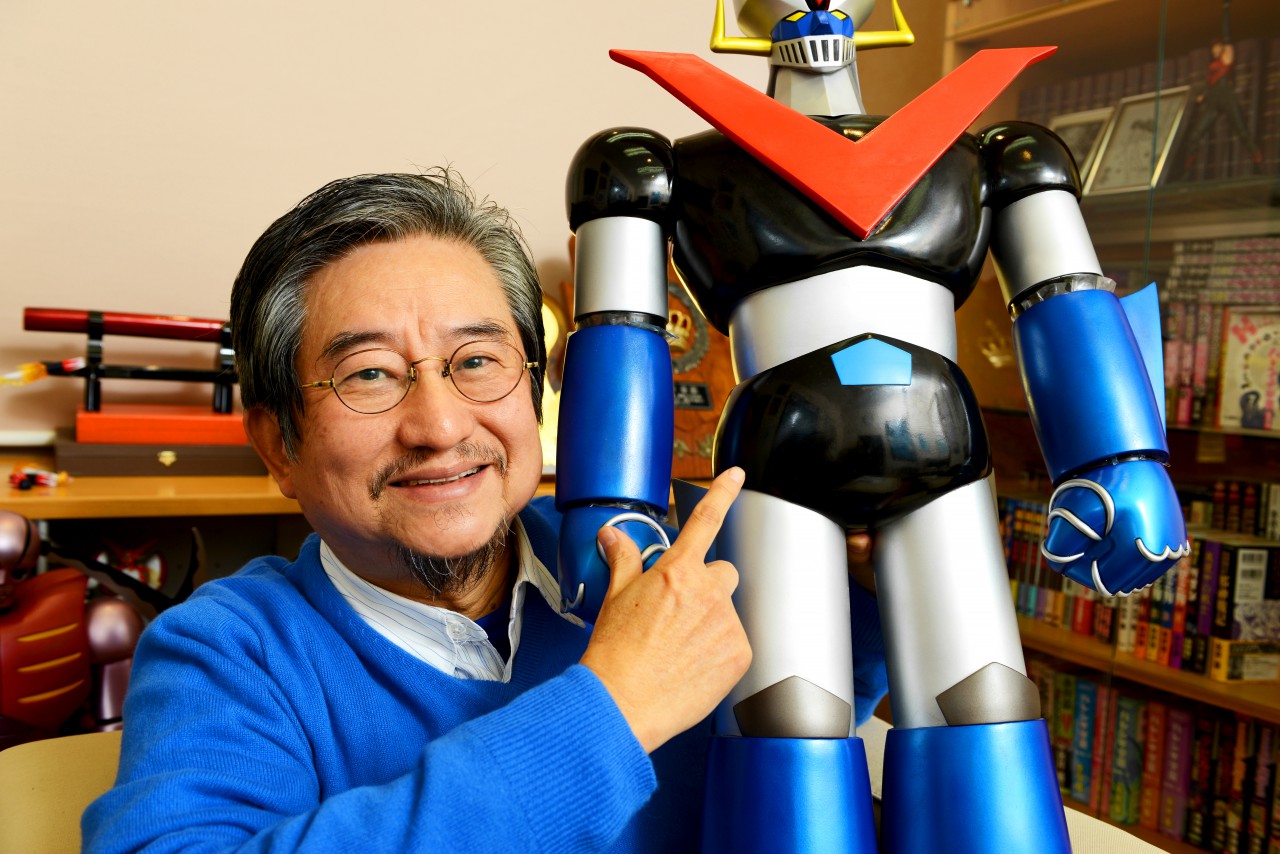 Go Nagai Sensei With Mazinger Z!
Go Nagai Sensei With Mazinger Z!
After reading the winning pieces, what did you think?
Nagai: As entertainment, it was very interesting. It was particularly interesting that, perhaps because of the influence of Japanese manga, even the European artists’ characters were somewhat Japanese.
It’s because they’re reading Japanese manga, I guess?
Nagai: That is correct. It’s just like, when Japanese artists followed American comics for a while. It will have a slightly western feel to it.
If you think about it, even within Japanese manga, there are sometimes characters that make you think “There are no Japanese people like this.” Do you think that something else influenced the characters drawn when you were younger?
Nagai: Well, that’s got to be Osamu Tezuka’s1 influence.
Mr. Tezuka put a filter on Disney characters, which in turn influenced the next generation of artists, including yourself. In this way, the characters diversified, correct?
Nagai: Yes, I believe Shotaro Ishinomori2 also copied Disney’s art style. Disney had a huge influence on the overall direction of Japanese manga.
Disney’s characters don’t seem so foreign, do they?
Nagai: Especially in the beginning, there were lots of animal characters, which were easy to adapt. Among Osamu Tezuka’s characters, Bambi3 had a big influence. That’s probably because, although Bambi was an animal, he also had that kind of Japanese cuteness.
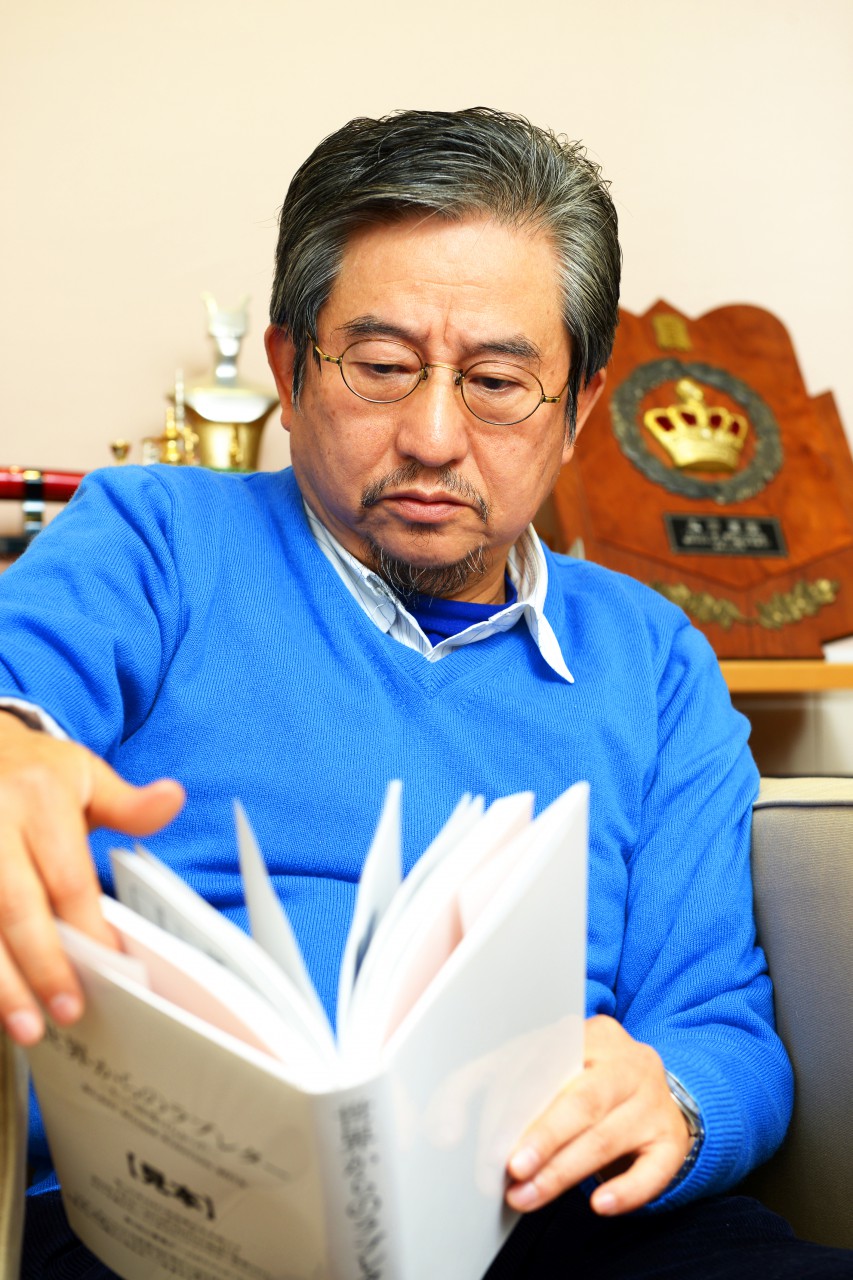
Speaking of animal characters, there was one in the Winner’s Award : “Sky Sky” by Prema-Ja.
Nagai: That’s right. The dog in the clouds was really cute.
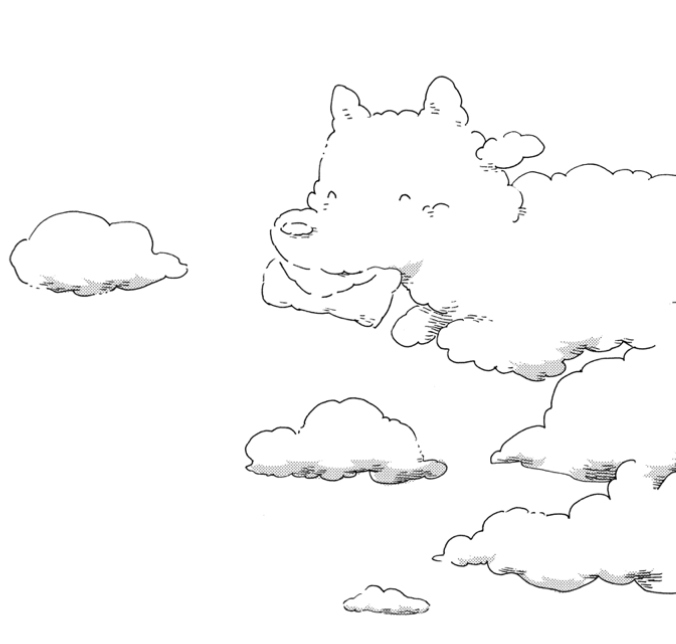 “Sky Sky” by Prema-Ja – Click to open embedded viewer
“Sky Sky” by Prema-Ja – Click to open embedded viewer
While there were many parts that were deeply influenced by Japanese manga, do you feel that there were any parts that are different?
Nagai: Rather than with the characters, you could see the differences in the scenery. For example, when the girl goes into the bathroom, you can see a pail there (Winner’s Award : “Excuse Me” by Alex Irzaqi)
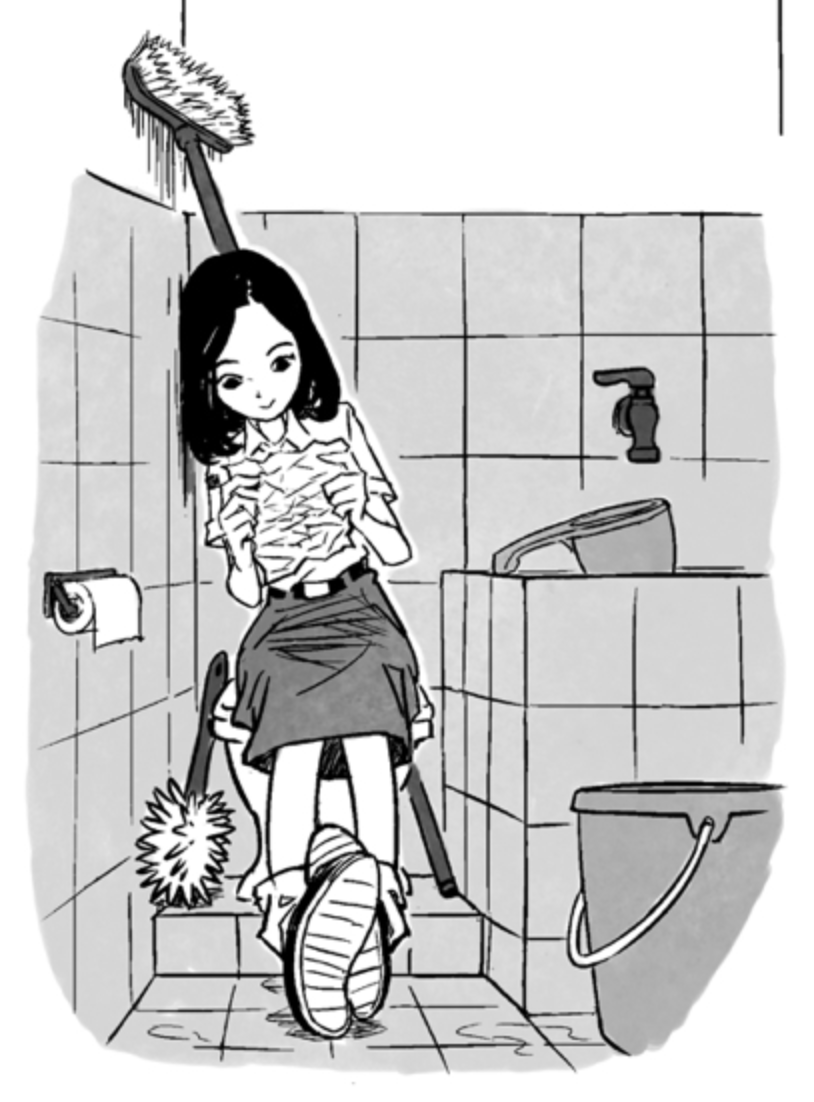 Winner’s Award : “Excuse Me” by Alex Irzaqi
Winner’s Award : “Excuse Me” by Alex Irzaqi
That was rather peculiar, wasn’t it?
Nagai: I suppose you wash your hands in it? It reminds me of when I went to Bali Island. Instead of toilet paper, the toilets there have some water for you to use, and I thought “Hummm, I might not be able to work this.” When you see the townscape or something like that, you definitely get the feeling that it’s taking place in a different country.
So now we have young artists from other countries, who have been influenced by Japanese manga, and they can get feedback.
Nagai: Yes, it’s really interesting. Japanese manga really has a lot of emotion. Taking into account the subtle differences between each panel, there’s a lot of feeling which emerges naturally inside one’s mind. That’s what manga is about. And I can see that people all over the world clearly understand this.
So Japanese manga’s most distinctive feature is its emotional side?
Nagai: That’s the biggest difference compared to other countries. For example, with American comics, each page can stand alone as an illustration. But Japanese manga’s “camera work” in respect of the characters’ movements is very diverse. It doesn’t just make the readers think of a paused frame. It does its best to make them feel that the story is in motion.
“If people say you can’t do something, then you want to do it even more!”
Since Mr. Tezuka’s debut just under half a century ago, expression in Japanese Manga has been rapidly evolving.Nagai: That’s quite right. I’ve witnessed a process of continual change. For example, Mr. Ishinomori was continually challenging himself to add his own innovations to what Mr. Tezuka had already developed. He worked really hard to make completely new panel layouts and other improvements.You worked as Mr. Ishinomori’s assistant, so you were able to see that process up close?
Nagai: That’s right. I was really surprised when Mr. Ishinomori created really long vertically divided panels. I thought “Wow, so you can also do it this way!” Speech bubbles lying across two panels, or characters drawn over multiple panels, things like that. Now we’re so used to it that we take it for granted, but at the time it was really astonishing.What kind of techniques have you personally developed?
Nagai: I originally started with gag manga, but I incorporated some elements from story manga. At the time, gag manga was divided into equal panels and you always saw the whole character’s body. It was almost like it was taking place on a stage. Back then, there were lots of comics like that. But I think that there is a limit to what you can express that way. So even though I was drawing gag manga, I started using large panels like in story manga, using close-ups, things like that.Were there any editors who rejected your work saying that it “wasn’t gag manga”?
Nagai: No, that never happened. They liked that it was “New”.Speaking of the challenges that you faced, I believe there were some issues with erotic scenes. Specifically, when the girls weren’t wearing very much. I think at the time, there were lots of complaints about that. Did you have a sort of “daredevil” mentality?
Nagai: If people say you can’t do something, then you want to do it even more. Things that are considered forbidden, means other people aren’t doing them yet!With regard to composition, scenes in manga are now shown from a variety of angles.
Nagai: That’s right. But it gets annoying if you overdo it so it’s difficult to decide where to use it. Like, if you want to make something look grand, you show it from low angle looking up. It’s something that you pick up intuitively as you go along.Do you feel that the winners were lacking in that area?
Nagai: No, not at all. For example, in the Winner’s Award Excuse Me, the scene where she comes out into the hallway and dashes to the bathroom was done quite brilliantly.
“A manga that only speaks with its words isn’t very interesting.”
I read in your autobiographical work Geki-man4 that when you were drawing Devilman5, which was being produced alongside the anime version, you were very enthusiastic about “doing things which can only be done in manga!” Was that sense of rivalry with the anime connected to the very bold depiction?Nagai: I wasn’t trying to compete with the anime. But that’s what happens when you get too involved in world-building. The thing is, in the beginning, the editor of the Weekly Shonen Magazine told me that the manga shouldn’t be the same as the anime. I was told that as it was a magazine for the grown-ups, the target age for the manga should be set higher and the scenes depicted more realistically. And at the end of the day, what exactly are devils about? Is it like a war, or something like that? After arriving at that point, we ended up going on to the end of the world!Going that deeply into an issue is also distinctive of Japanese manga, I believe?
Nagai: Because part of it was developed for expressing the state of one’s mind. After reading the winning works of SILENT MANGA AUDITION, I realised that manga doesn’t really need words. In fact, a manga that tells a story only using words isn’t that interesting.Recently, there are a lot of works that over-explain things?
Nagai: If that’s what you want to do, I think it would be better to write a novel. At least, that’s how I feel. Using facial expressions or small movements to explain things that you want to explain with words is difficult, but in the end it makes it that much better a manga. Also, within manga, there are a lot of convenient ways of doing things, but sometimes you actually get a better effect if you don’t use them. For example, Katsuhiro Otomo6 didn’t use any onomatopoeia. He used freeze frame techniques and things like that instead. If you look carefully at silent manga, you’ll see that these kinds of technique are continually being developed.Was there ever a time when you drew silent manga?
Nagai: There was. There is a story called “Kagami no naka no sora” that was published within the Go Nagai Anthology (the SF strange tales edition). If I get a chance, I’d like to try and draw another, but it would probably end up being really long, and then fail to stand out. It would get lost among a bunch of manga that use dialogue. It would be nice if there was a silent manga only project.
I’m looking forward to the birth of a new kind of manga that will surprise Japanese people!
What particular element do you think has made your works, such as Mazinger Z7 or UFO Robot Grendizer8 so successful overseas?Nagai: First, I think they were surprised at the sense of… reality. Even if you create a fictional world, it still needs to be convincing. Regardless of how much the story escalates, or how large-scale it is, when there’s an eating scene, people need to say “delicious!” or a girl needs to squeal and say “That’s so embarrassing!” It’s the accumulation of these emotional expressions that give birth to a convincing reality. Just like in Mazinger Z, you can see the people who are harmed by the robots activities and it has amazing impact. Perhaps that part felt very fresh to them.You have a lot of fanatical fans in Europe. I bet that there are lots of creators who were raised on the works that you drew.
Nagai: There are a lot. In France, Grendizer, which was aired under the title Goldorak, was a huge hit. The viewer ratings exceeded 70%, causing a sort of social phenomenon. It seems that there was a lot of controversy, just like with Harenchi Gakuen9. People were saying “Is it okay to let our kids watch this!?”There are clearly a lot of Science Fiction stories that have been influenced by your works. As a teacher, what kind of talents would you like to see brought out through this SILENT MANGA AUDITION?
Nagai: Even if they start out by imitating Japanese manga, they are still fundamentally children of their own cultures. And I think that this will begin to show more and more. Eventually, they will produce something completely original, that a Japanese person couldn’t possibly come up with. Then Japanese people will says things like “Wow, never thought of manga like this!” or “So we can draw this kind of theme!” This surprise will be like a kind of reverse import that will in turn change Japanese manga. After all, Japanese manga was originally greatly influenced by American comics and Disney, so these things go around in cycle.Finally, Mr. Nagai, do you have a message for the winners?
Nagai: All creations are a “journey of the mind”, which explores the creator’s own inner world. If you treasure these dialogues with yourself, then I think you will be able to make something really original. Please do your best!Go Nagai Profile Born on 6th September 1945, in Ishikawa Prefecture. At a young age, he decided to become a manga artist, after seeing Osamu Tezuka’s Lost World. After working as an assistant for Shotaro Ishinomori, he debuted in 1967 with the title Meakashi Porikichi. Through the bold incorporation of excessive violence and sexual scenes in his work, he greatly influenced later manga artists. Some of his notable works include Harenchi Gakuen, Devilman, Mazinger Z and Cutie Honey. In 2005, he become a character design professor at the Osaka University of Arts.
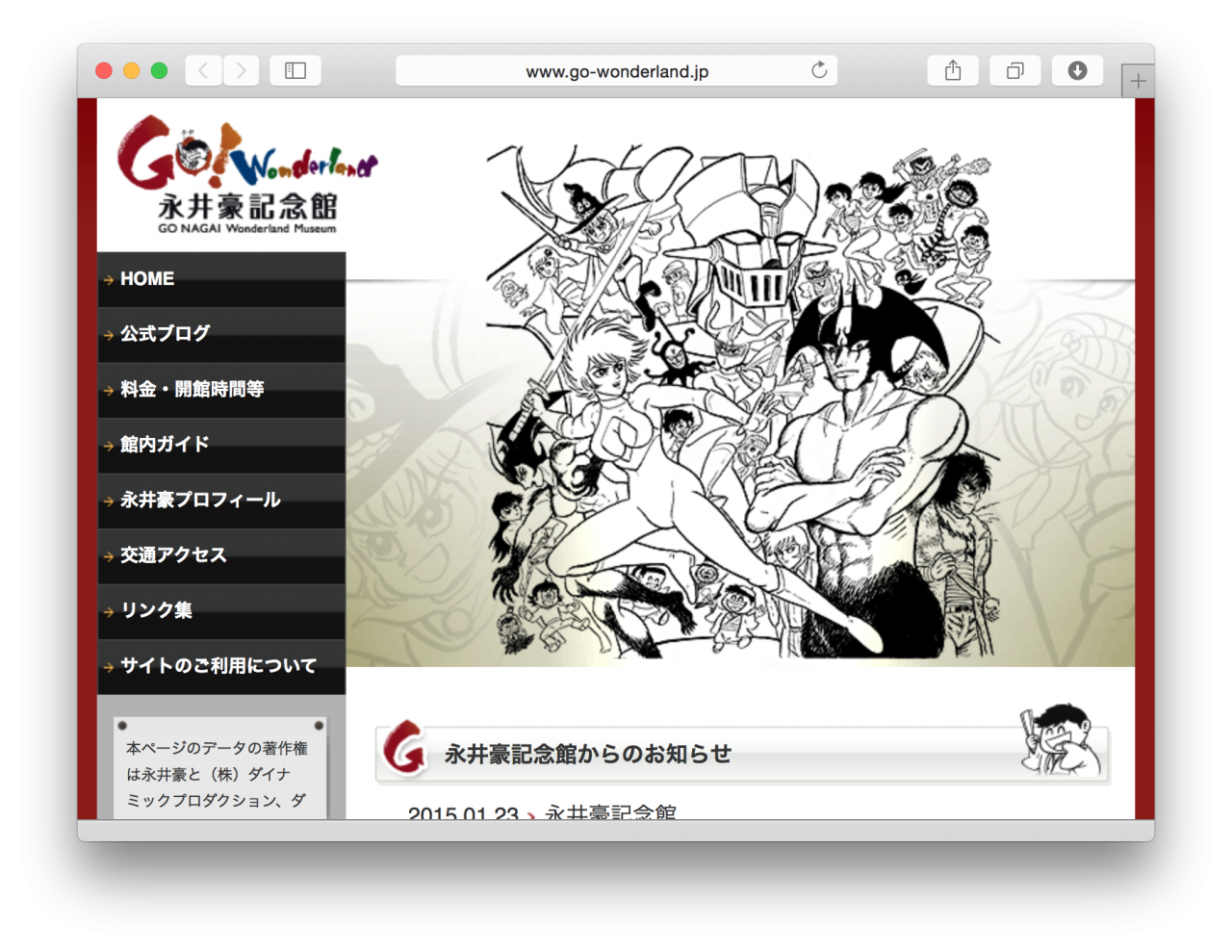 Go Nagai official site “Go-Wonderland”
Go Nagai official site “Go-Wonderland” 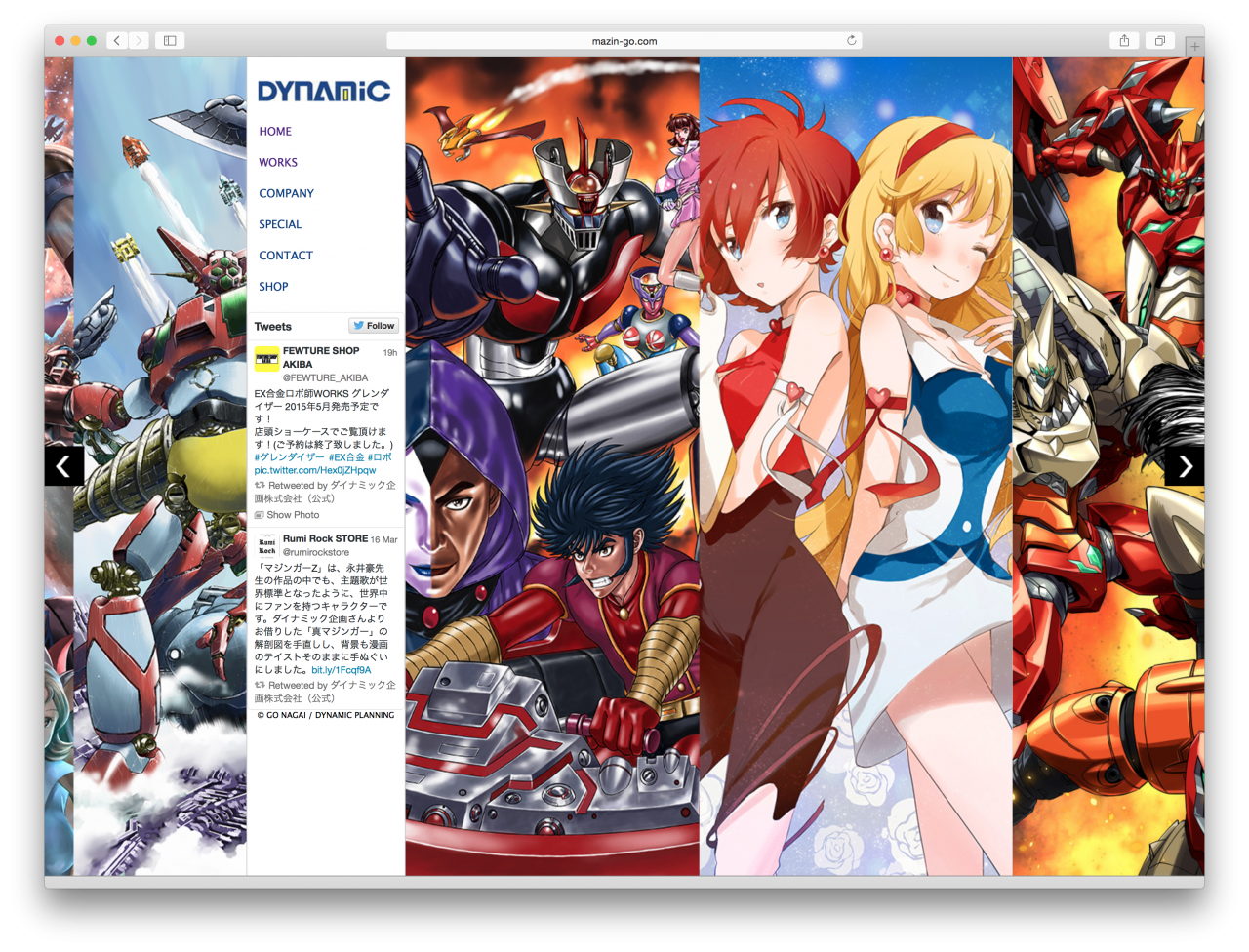 Dynamic Pro Official Site References:
†1 Osamu Tezuka
Born in 1928 in Osaka, he is regarded as a pioneer of Japanese story manga. He established the
current style of manga, and was one of the first to set his hand to creating serial TV anime. Some
of his notable works include Astro Boy, Kimba the White Lion, Phoenix and
Black Jack. He died of stomach cancer in 1989, at the age of 60.
†2 Shotaro Ishinomori
Born in 1938 in Miyagi Prefecture. He debuted while still in high school. As a young man, he
polished his skills with Fujio Akatsuka, Fujio Fujiko and other budding artists at Tokiwa-so.
Possessing storytelling ability on a level rarely seen, he produced one big hit after another. He
created the original Kamen Rider series. Some of his notable works include
Cyborg 009, Sabu and Ichi’s Detective Memoirs and Hotel. He died of heart
failure in 1998 at the age of 60.
†3 Bambi
An animated movie released in 1942 (1951 in Japan). Produced by Walt Disney Company. The story of
how Bambi, born as a child of the Prince of the Forest, grows up after his mother’s death. In 1952,
Osamu Tezuka created a comic version for the publisher Tsurushobo.
†4 Gekiman!
A fictional, bordering on non-fictional, autobiographical work drawn by Go Nagai. It was serialized
in the Weekly Manga Goraku magazine from 2010 to 2012. It gives us a behind the scenes look at a
period of exhausting hard work, during which manga artist Geki Nagai (Go Nagai’s fictional persona)
is busy with multiple serials. It also depicts the passionate emotions that he channels into his
work.
†5 Devilman
One of Go Nagai’s notable works, featuring a devil as the hero. It was serialized in the Weekly
Shonen Magazine from 1972 to 1973. Although it was a tie-up project with the TV anime, the two
stories ended up going in separate directions. While the anime version took a ‘good is rewarded and
evil is punished’ moral route, the manga version had an apocalyptic undertone combined with a
complex fictional world. This had a great influence on the next generation of manga artists.
†6 Katsuhiro Otomo
Born in 1954 in Miyagi Prefecture. He debuted in 1973 with A Gun Report (published in Manga
Action). Some of his notable works include Domu and Akira. His style, which makes
use of very precise drawing and complicated perspectives in scene composition, was part of a “new
wave” in manga and gained many followers.
†7 Mazinger Z
Produced alongside the anime version, it was serialized in Weekly Shonen Jump from 1972 to 1973. Not
only did viewer ratings for the anime version exceed 30%, but extremely high sales of Chogokin (a
line of toys based on the show) were also recorded. It was extremely popular in most European
countries (There is a Mazinger Z statue in the city of Tarragona, Spain)
†8 UFO Robot Grendizer
The third chapter of the Mazinger series. It was aired from 1975 to 1977 on Fuji TV. Its
popularity overseas was even greater than in Japan. Especially when aired under the title
Goldorak in France, a 100% viewer rating was once recorded.
†9 Harenchi Gakuen
A gag manga that was serialized in Weekly Shonen Jump from 1968 to 1972. It follows the outrageous
episodes of a group of energetic and perverted elementary school children and their teachers.
Besides giving rise to the highly popular skirt lifting trope, the depiction was unusually radical
for the time, causing a great stir. I became a social phenomenon and many experts became involved.
Dynamic Pro Official Site References:
†1 Osamu Tezuka
Born in 1928 in Osaka, he is regarded as a pioneer of Japanese story manga. He established the
current style of manga, and was one of the first to set his hand to creating serial TV anime. Some
of his notable works include Astro Boy, Kimba the White Lion, Phoenix and
Black Jack. He died of stomach cancer in 1989, at the age of 60.
†2 Shotaro Ishinomori
Born in 1938 in Miyagi Prefecture. He debuted while still in high school. As a young man, he
polished his skills with Fujio Akatsuka, Fujio Fujiko and other budding artists at Tokiwa-so.
Possessing storytelling ability on a level rarely seen, he produced one big hit after another. He
created the original Kamen Rider series. Some of his notable works include
Cyborg 009, Sabu and Ichi’s Detective Memoirs and Hotel. He died of heart
failure in 1998 at the age of 60.
†3 Bambi
An animated movie released in 1942 (1951 in Japan). Produced by Walt Disney Company. The story of
how Bambi, born as a child of the Prince of the Forest, grows up after his mother’s death. In 1952,
Osamu Tezuka created a comic version for the publisher Tsurushobo.
†4 Gekiman!
A fictional, bordering on non-fictional, autobiographical work drawn by Go Nagai. It was serialized
in the Weekly Manga Goraku magazine from 2010 to 2012. It gives us a behind the scenes look at a
period of exhausting hard work, during which manga artist Geki Nagai (Go Nagai’s fictional persona)
is busy with multiple serials. It also depicts the passionate emotions that he channels into his
work.
†5 Devilman
One of Go Nagai’s notable works, featuring a devil as the hero. It was serialized in the Weekly
Shonen Magazine from 1972 to 1973. Although it was a tie-up project with the TV anime, the two
stories ended up going in separate directions. While the anime version took a ‘good is rewarded and
evil is punished’ moral route, the manga version had an apocalyptic undertone combined with a
complex fictional world. This had a great influence on the next generation of manga artists.
†6 Katsuhiro Otomo
Born in 1954 in Miyagi Prefecture. He debuted in 1973 with A Gun Report (published in Manga
Action). Some of his notable works include Domu and Akira. His style, which makes
use of very precise drawing and complicated perspectives in scene composition, was part of a “new
wave” in manga and gained many followers.
†7 Mazinger Z
Produced alongside the anime version, it was serialized in Weekly Shonen Jump from 1972 to 1973. Not
only did viewer ratings for the anime version exceed 30%, but extremely high sales of Chogokin (a
line of toys based on the show) were also recorded. It was extremely popular in most European
countries (There is a Mazinger Z statue in the city of Tarragona, Spain)
†8 UFO Robot Grendizer
The third chapter of the Mazinger series. It was aired from 1975 to 1977 on Fuji TV. Its
popularity overseas was even greater than in Japan. Especially when aired under the title
Goldorak in France, a 100% viewer rating was once recorded.
†9 Harenchi Gakuen
A gag manga that was serialized in Weekly Shonen Jump from 1968 to 1972. It follows the outrageous
episodes of a group of energetic and perverted elementary school children and their teachers.
Besides giving rise to the highly popular skirt lifting trope, the depiction was unusually radical
for the time, causing a great stir. I became a social phenomenon and many experts became involved.





